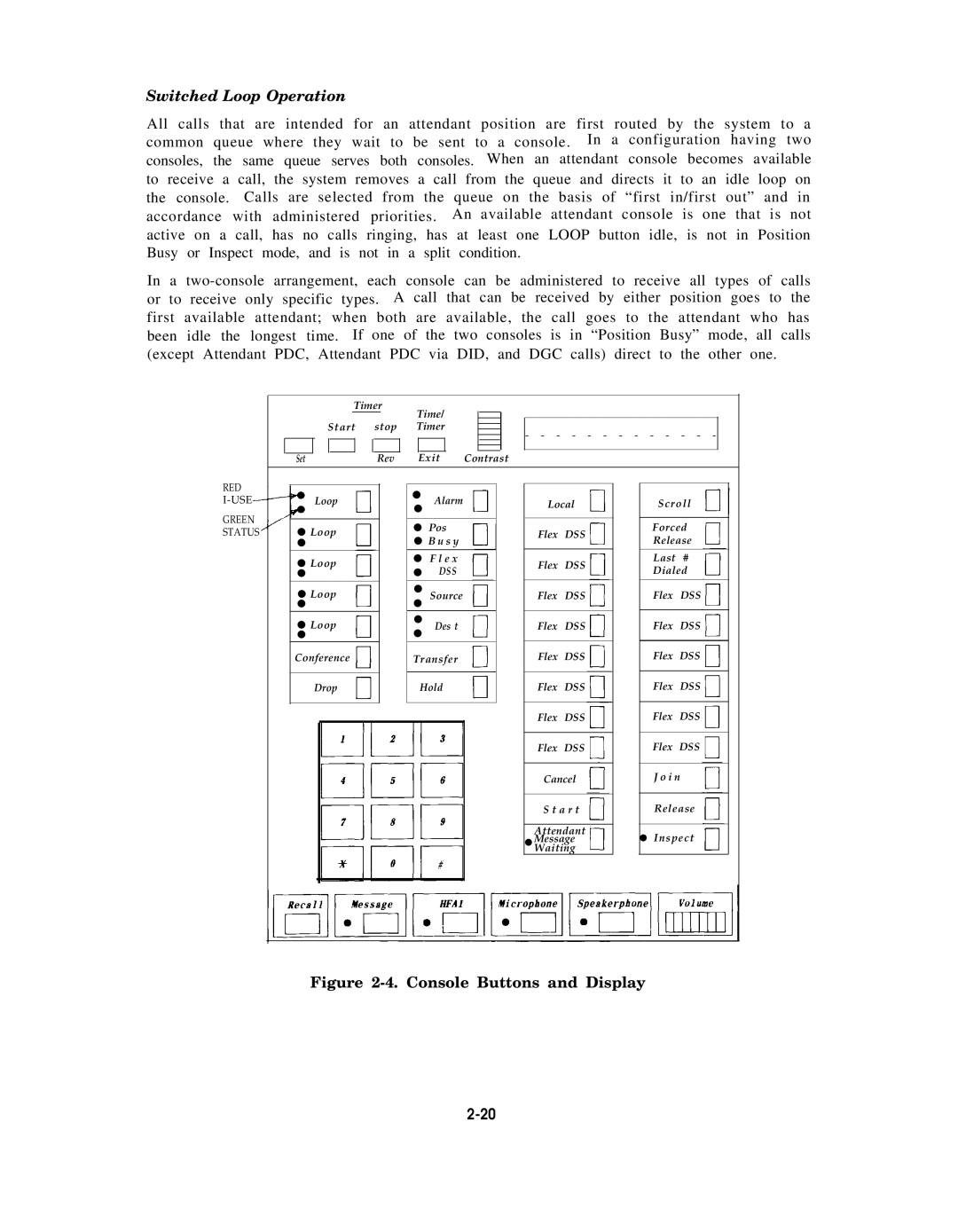
Switched Loop Operation |
|
|
|
|
|
|
| ||
All calls that are intended for an attendant position are | first routed by the system | to a | |||||||
common queue where they wait to be sent to a console. | In a | configuration having | two | ||||||
consoles, the | same | queue serves both | consoles. When | an attendant | console | becomes | available | ||
to receive a | call, | the system removes | a call from the | queue | and directs it | to an idle | loop on | ||
the console. Calls are selected from the queue on the basis of “first in/first out” and in
accordance with administered | priorities. | An available attendant | console is one that | is not | ||
active | on a call, has no calls | ringing, has | at least one LOOP button idle, is not in Position | |||
Busy | or Inspect mode, and is not in a split | condition. |
|
| ||
In | a | |||||
or | to | receive only specific types. A call that can be received by | either position goes | to the | ||
first available attendant; when both are available, the | call | goes to the | attendant | who | has | |||
been idle the longest time. If one of the two consoles | is | in | “Position | Busy” | mode, | all | calls | |
(except Attendant PDC, Attendant PDC via DID, and DGC | calls) direct | to | the | other | one. |
| ||
Timer
Time/
Start stop Timer
- - - - - - - - - - - - -
Set | Rev | Exit | Contrast |
RED
GREEN STATUS
Loop
●Loop
●Loop
●Loop
●Loop
Conference
Drop
●Alarm
●Pos
●B u s y
●F l e x
●DSS
●
Source
●
●
●Des t
Transfer
Hold
Local
Flex DSS
Flex DSS
Flex DSS
Flex DSS
Flex DSS
Flex DSS
Flex DSS
Flex DSS
Cancel
. S t a r t
Attendant
Message
Waiting
Scroll
Forced
Release
Last #
Dialed
Flex DSS
Flex DSS
Flex DSS
Flex DSS
Flex DSS
Flex DSS
J o i n
.InspectRelease
